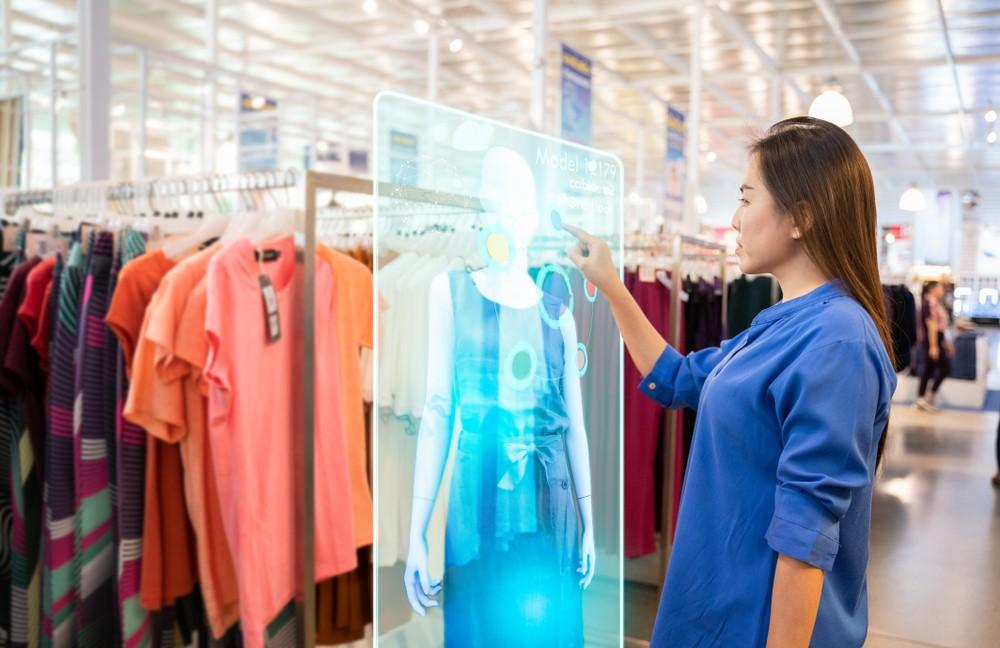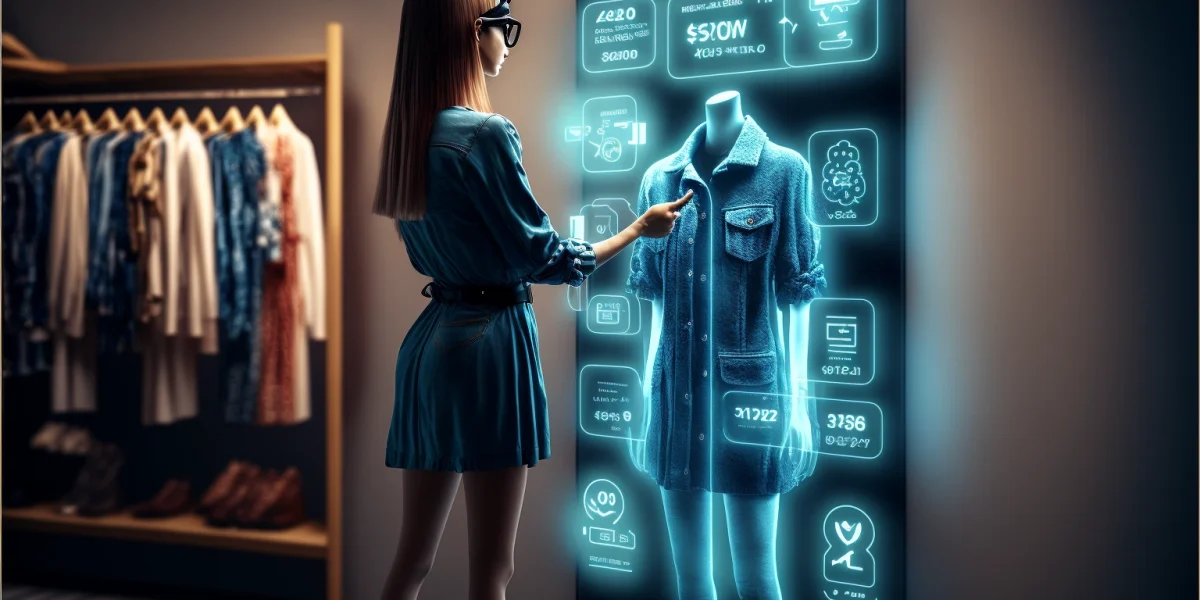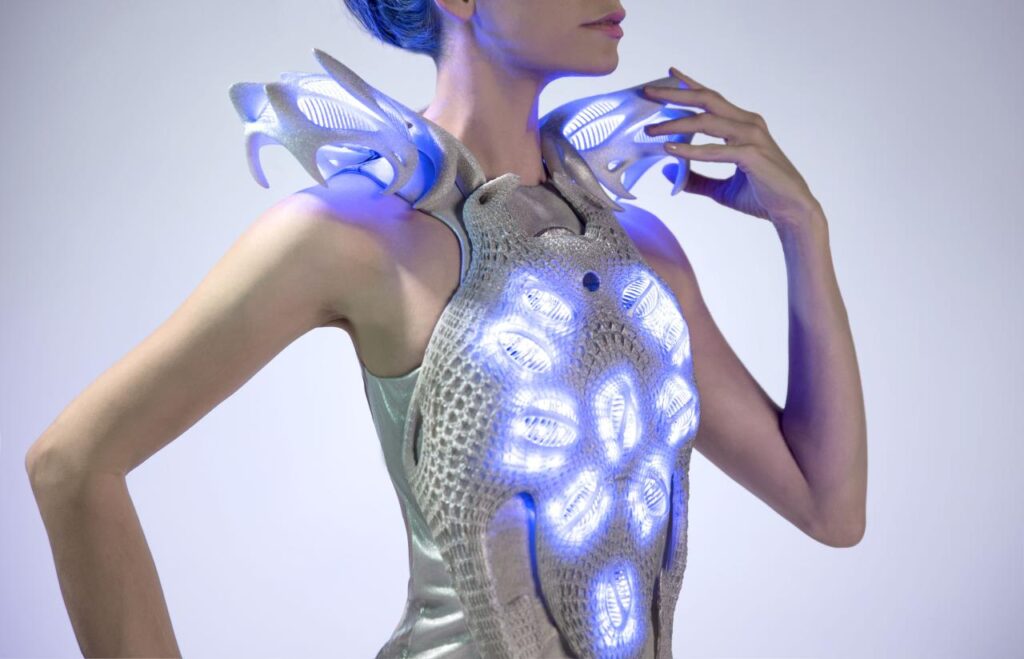The fashion industry is undergoing a radical transformation as digital technologies redefine how clothes are designed, produced, marketed, and worn. From virtual runway shows to blockchain-verified garments and AI-powered designs, digital fashion is emerging as a new frontier that fuses creativity with cutting-edge tech.
This article explores the evolution of digital fashion, the technologies driving innovation, its applications across industries, and how brands can stay ahead by embracing digital transformation. Whether you’re a fashion entrepreneur, tech developer, or digital marketer, understanding digital fashion innovation is key to navigating the future of style.
What Is Digital Fashion?
Digital fashion refers to clothing and fashion items that exist in digital environments rather than the physical world. These garments can be worn in virtual spaces, used in video games, enhanced through augmented reality, or applied in digital content on social media platforms.
But digital fashion isn’t just about virtual clothes—it represents a broader shift in how fashion is conceived, customized, consumed, and circulated in an increasingly digital society.
The Rise of Digital Fashion Innovation
Several driving forces have contributed to the growth of digital fashion innovation:
A. Sustainability Pressure
Traditional fashion manufacturing generates massive environmental waste. Digital fashion provides a sustainable alternative by reducing physical production.
B. Growth of the Metaverse
As virtual worlds like Roblox, Decentraland, and Horizon Worlds expand, digital avatars need clothing—creating a new market for virtual apparel.
C. Social Media and Influencer Culture
Digital fashion enables influencers to showcase new looks without shipping or changing clothes physically.
D. NFTs and Blockchain
Fashion brands use NFTs (non-fungible tokens) to authenticate ownership and offer limited digital collections with traceable value.
E. Pandemic-Driven Digitization
COVID-19 accelerated the adoption of virtual fashion shows, AR try-ons, and online-exclusive releases.
Key Technologies Behind Digital Fashion
Digital fashion innovation wouldn’t be possible without powerful supporting technologies:
A. 3D Modeling and Design Software
Tools like CLO 3D, Marvelous Designer, and Blender allow designers to create lifelike virtual garments.
B. Augmented Reality (AR)
AR enables virtual try-ons via mobile devices or smart mirrors, enhancing the shopping experience both online and in stores.
C. Virtual Reality (VR)
VR environments host immersive runway shows, virtual fitting rooms, and digital fashion exhibitions.
D. Artificial Intelligence (AI)
AI helps predict fashion trends, generate designs, and offer personalized recommendations.
E. Blockchain Technology
Blockchain is used to authenticate digital clothing and enable resale through smart contracts.
F. Non-Fungible Tokens (NFTs)
NFTs create scarcity and ownership in the digital realm, enabling exclusive virtual fashion drops.
Applications of Digital Fashion

Digital fashion is already disrupting several areas of the fashion ecosystem:
A. Virtual Runway Shows
Designers can launch collections in immersive 3D spaces, reducing event costs and expanding reach.
B. Digital Garments for Social Media
Influencers and creators can wear digital outfits in photos and videos without owning the physical item.
C. In-Game Fashion
Avatars in games like Fortnite, The Sims, and Roblox can purchase and wear fashion items created by luxury brands.
D. AR Fitting Rooms
Retailers use AR to let shoppers try clothes virtually, minimizing returns and improving convenience.
E. Personalized Shopping Experiences
AI and digital fashion merge to provide users with customized styling options based on preferences and body types.
F. NFT-Linked Digital Apparel
Brands sell digital outfits as NFTs, often paired with physical counterparts or metaverse access.
Examples of Digital Fashion Innovators
Here are some companies and designers leading the digital fashion revolution:
A. The Fabricant
A fully digital fashion house creating high-end virtual garments for brands, influencers, and consumers.
B. DressX
Offers a wide range of digital fashion items for use on social media and in virtual platforms.
C. Balenciaga
Collaborated with Fortnite to release virtual outfits and accessories.
D. Gucci
Launched digital sneakers (Gucci Virtual 25) and entered Roblox with limited-edition items.
E. RTFKT Studios
Combines fashion with NFTs and AR, acquired by Nike to expand their presence in the metaverse.
F. Adidas x Bored Ape Yacht Club
Blended fashion, NFTs, and blockchain in a metaverse-focused launch.
Benefits of Digital Fashion

Digital fashion provides several key advantages for both brands and consumers:
A. Sustainability
Eliminates material waste, overproduction, and shipping emissions.
B. Speed to Market
Virtual collections can be created, adjusted, and released rapidly.
C. Creative Freedom
Designers can experiment without physical constraints, enabling fantastical or physics-defying outfits.
D. Global Accessibility
Digital fashion is borderless, allowing global audiences to engage with collections instantly.
E. New Revenue Streams
NFTs, digital drops, and gaming collaborations create monetization opportunities.
F. Enhanced Consumer Engagement
Virtual experiences and interactive fashion boost brand loyalty and digital reach.
Challenges in Digital Fashion Innovation
Despite its potential, digital fashion faces several hurdles:
A. Limited Mainstream Adoption
Most consumers still prefer physical clothing and have limited exposure to digital fashion.
B. Technological Barriers
Advanced hardware or software is often needed to view or interact with digital fashion pieces.
C. NFT Market Volatility
The NFT space is still speculative and subject to regulation and public trust.
D. Intellectual Property Issues
Copying and unauthorized resale of digital items remain difficult to police.
E. Data Privacy
Collecting body data and shopping behavior raises privacy concerns.
Digital Fashion and the Metaverse
The metaverse—an interconnected network of virtual spaces—is a natural home for digital fashion. Avatars represent personal identity, and fashion becomes a key method of expression. In this context:
A. Brands Design for Virtual Wear
Gucci, Dolce & Gabbana, and Tommy Hilfiger have released metaverse-ready outfits.
B. Identity and Status
Owning rare digital clothing (as NFTs) is a new form of social capital in the metaverse.
C. Cross-Platform Use
Interoperability allows users to wear their digital garments across different platforms and virtual worlds.
Digital Fashion for E-Commerce Brands
Retailers are integrating digital fashion features to improve sales and reduce costs:
A. Virtual Try-On Features
Try-before-you-buy features increase conversion rates and reduce returns.
B. Pre-Production Testing
Brands can showcase digital samples to test customer interest before physical production.
C. Customization Tools
Consumers can modify designs digitally before ordering the final physical product.
D. Shoppable AR Experiences
Interactive catalogs and 3D modeling make shopping more immersive.
How to Integrate Digital Fashion into Your Strategy

For brands or entrepreneurs interested in digital fashion, here’s how to get started:
A. Partner with 3D Designers
Collaborate with digital artists to create virtual collections or samples.
B. Experiment with AR Filters
Use platforms like Instagram or Snapchat to release branded AR fashion experiences.
C. Sell Digital-Only Products
Launch exclusive digital items or accessories for avatars or social media use.
D. Use NFTs for Exclusivity
Introduce blockchain-verified ownership for your most innovative fashion pieces.
E. Promote on Gaming Platforms
Market your digital garments in popular virtual worlds with high user engagement.
Future Trends in Digital Fashion
The industry is still in its infancy, but several emerging trends are worth watching:
A. AI-Generated Fashion
AI models are being trained to generate entire collections based on mood boards or user preferences.
B. Fashion-as-a-Service
Subscription models for digital wardrobe access may become popular in metaverse and content creation spaces.
C. Sustainable Digital-Physical Hybrids
Designs begin as digital, then move to ethical physical production based on demand.
D. Wearable Tech Integration
Digital fashion may blend with wearables, including smart fabrics and biometric-responsive clothing.
E. Cross-Reality Interactions
As AR and VR converge, users may wear the same outfit across virtual meetings, social apps, and games.
Digital Fashion and Gen Z Consumers
Gen Z is the main driver of digital fashion, with their openness to virtual identities and desire for sustainable, tech-infused lifestyles. Key preferences include:
A. Customization
They expect unique, personalized digital pieces to reflect their individuality.
B. Social Media-Ready Looks
Digital clothing is used for self-expression in photos, reels, and avatars.
C. Gamified Fashion
Fashion becomes part of a larger gaming experience and social interaction.
Conclusion: The Digital Revolution of Style
Digital fashion innovation is more than a trend—it’s a paradigm shift in how we perceive, consume, and engage with style. With the convergence of fashion, technology, and digital identity, brands that embrace digital transformation will be poised to lead in a rapidly evolving market.
From metaverse avatars to AR runways and AI-generated collections, the fusion of digital creativity with fashion design opens limitless possibilities. Whether you’re a legacy brand or a startup, now is the time to explore, experiment, and innovate in the digital fashion realm.
The future of fashion is not just wearable—it’s programmable, scalable, and entirely without fabric.







